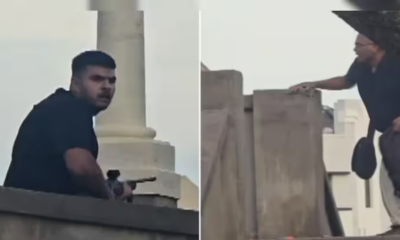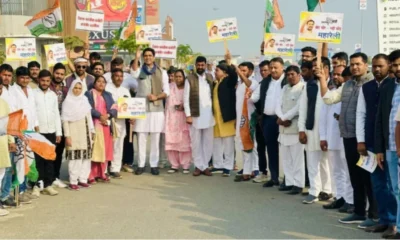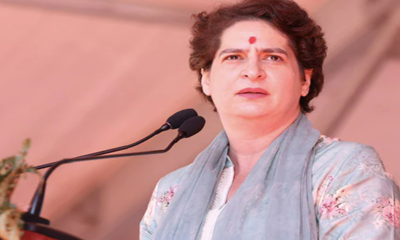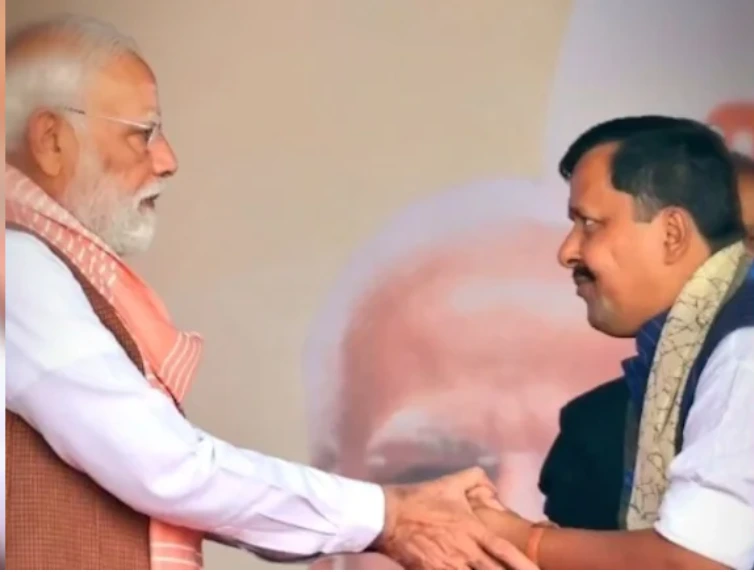From August, the BJP will go into election mode, BJP president Amit Shah had said a few days ago. While that might sound amusing to many who feel that the party leadership is perpetually in campaign mode, the party plans to take it to another level.
Prime Minister Narendra Modi, in whose projection the party – and the government – has invested heavily, will obviously be at the centre of the campaign.
Taking the party campaign ahead, PM Modi, who has used official platforms earlier to bolster poll campaigns as in the last Jharkhand and UP by-elections, is reported to have asked all ministries to furnish state-wise details of projects that would be ready for foundation stone laying or inauguration over the next six months till December 31.
According to a report in The Economic Times (ET), the Prime Minister’s Office (PMO) has asked all ministries to give detailed reports on projects that can be initiated or inaugurated over the next six months by PM Modi.
The ministries have been asked to give names of projects, their funding pattern (how much money would be provided by the Centre and state government) and whether all clearances have been taken to initiate the projects, said the ET report. The emphasis is on infrastructure ministries, including housing and urban affairs, road transport and highways, railways and civil aviation.
A pro forma has been circulated among ministries to provide a detailed account of projects and whether the PM could lay the foundation stone, inaugurate them or dedicate them “to the nation”.
The directive also lays emphasis on projects that Modi would lay foundation stones for, said ET. “It may be ensured that all clearances are available in respect of the projects intimated,” said ET, quoting the document. The exercise has been initiated well ahead of the Assembly elections in three BJP-ruled states of Rajasthan, Madhya Pradesh and Chhattisgarh.
The exercise, carefully coordinated by the PMO, indicates how conscious the BJP-led NDA government is of people’s perception. The Congress-led UPA government had faced a problem in appropriating credit for the central schemes in BJP-ruled states. PM Modi, in contrast, has managed to get good publicity even through inaugurating projects launched by the previous regime.
PM Modi opened the UP campaign when he inaugurated Samsung’s mobile manufacturing plant, touted as the biggest in the world, in Noida. Building on this, PM Modi will be touring Azamgarh, Varanasi and Mirzapur on July 14-15, said a News18 report. The PM will spend a night in Varanasi, his Lok Sabha constituency, on July 14. He will also attend a rally in Shajahanpur on July 21 and another in Lucknow for a smart city programme on July 29. It is expected that the PM will hit out at the mahagathbandhan plan of the opposition.
Before Lok Sabha dates are announced in February next year, PM Modi will have completed almost 50 rallies throughout the country, said News18 quoting sources. As Rajasthan, MP and Chhattisgarh go to polls later this year, October and November have been marked out for separate rallies by the PM for these state elections.
The party would drum up a campaign claiming phenomenal, unprecedented, all round progress under Modi while blaming the previous regimes for the problems. To counter the reports about growing joblessness, investors pulling out and stalling projects, falling industrial growth and farmers unrest, it is expected to play on reports of India becoming sixth largest economy, reports on ease of doing business index, the hike in minimum support price among steps for doubling farm income, and similar themes.
BJP president Amit Shah has been touring state after state to drive home the party’s message. Shah has been meeting party vistaraks, booth managers, and chalking out the success roadmap for the party. In essence, both the party and the government are in poll mode.
BJP also plans farmer rallies all over the country. In line with its campaign theme, it held the first such rally at Muktsar in Punjab on July 11 where PM Modi accused the Congress of using farmers as a vote bank during nearly 70 years of its rule as it believed in serving the interest of only ‘one family’. Another big farmer rally has been planned in UP’s Shahjahanpur on July 21. This will be followed by a rally each in Odisha and Karnataka. The PM is expected to talk about government initiatives at these rallies, especially the initiatives taken for farmers.
Other than PM Modi, senior leaders like Amit Shah, Home Minister Rajnath Singh, Transport Minister Nitin Gadkari too will conduct their own separate rallies and these too will complete 50 rallies by February next year. Each rally will cover two to three Lok Sabha constituency. This means that by next year the BJP will have completed 200 rallies and reached out to 400 Lok Sabha constituencies, News18 reported. The BJP hopes this would to get the party in shape in time to take on a united opposition.


 Latest world news12 hours ago
Latest world news12 hours ago
 India News9 hours ago
India News9 hours ago
 India News8 hours ago
India News8 hours ago
 India News6 hours ago
India News6 hours ago
 India News6 hours ago
India News6 hours ago
 India News3 hours ago
India News3 hours ago









